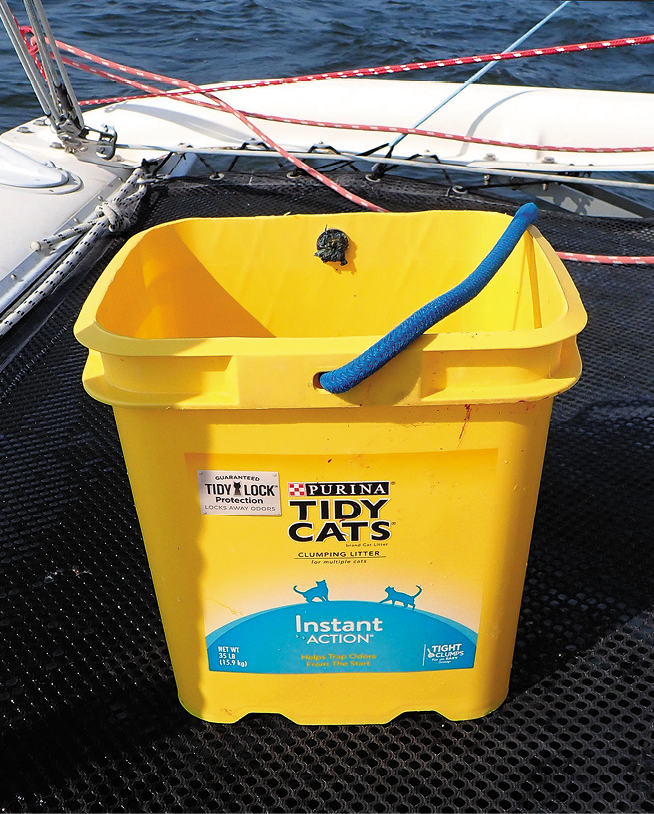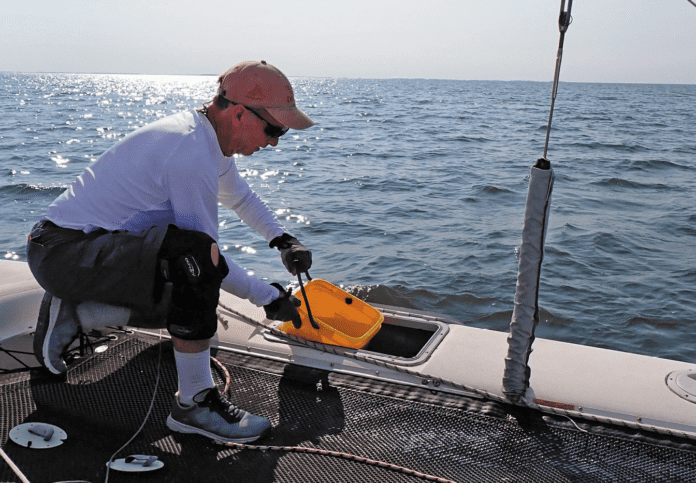Perhaps one reason our buckets keep cracking is that we have to compress them a bit to fit them through the 10-inch rectangular hatch (5-gallon buckets are 12 inches in diameter and most 3-gallon buckets are 11-12 inches). Additionally, a round bucket doesn’t fit well in the tapered bilge of our test trimaran floats (amas).
The obvious solution is a rectangular bucket, and when I started caring for the household cat, the solution became obvious—a cat litter bucket. They are sturdy enough, designed to hold and dispense 35 pounds of litter, but they are too tall, hold too much (about 5 gallons), and the handles are junk. So we fixed it.
The reinforced handle ring starts two inches down, so remove the top two inches of the bucket with a razor knife. This solves the height and capacity problem without removing the reinforcement.

The stock plastic handle is junk, so pop it out. I prefer rope handles. I secure the rope with a stopper knot or a bowline, but I wanted something less intrusive for this narrow bucket. Fortunately, there is a stronger, neater way to attach the rope. Select a scrap of ½-inch nylon rope (nylon melts better than polyester) and fit it through a drilled hole with a snug-fitting galvanized washer on the inside. Allowing an extra 3/4-inch of rope on the inside, melt a huge blob on the end, and flatten it against the washer using a scraper or cheap knife.
This solidified head can’t slip through the washer, which distributes the force against the bucket, and it protrudes only a small fraction of an inch into the bucket. This saves space and leaves the sides snag-free. Repeat on the other side.
Paint remover will get rid of the graphics, but being a proud cat person, I haven’t bothered.







































